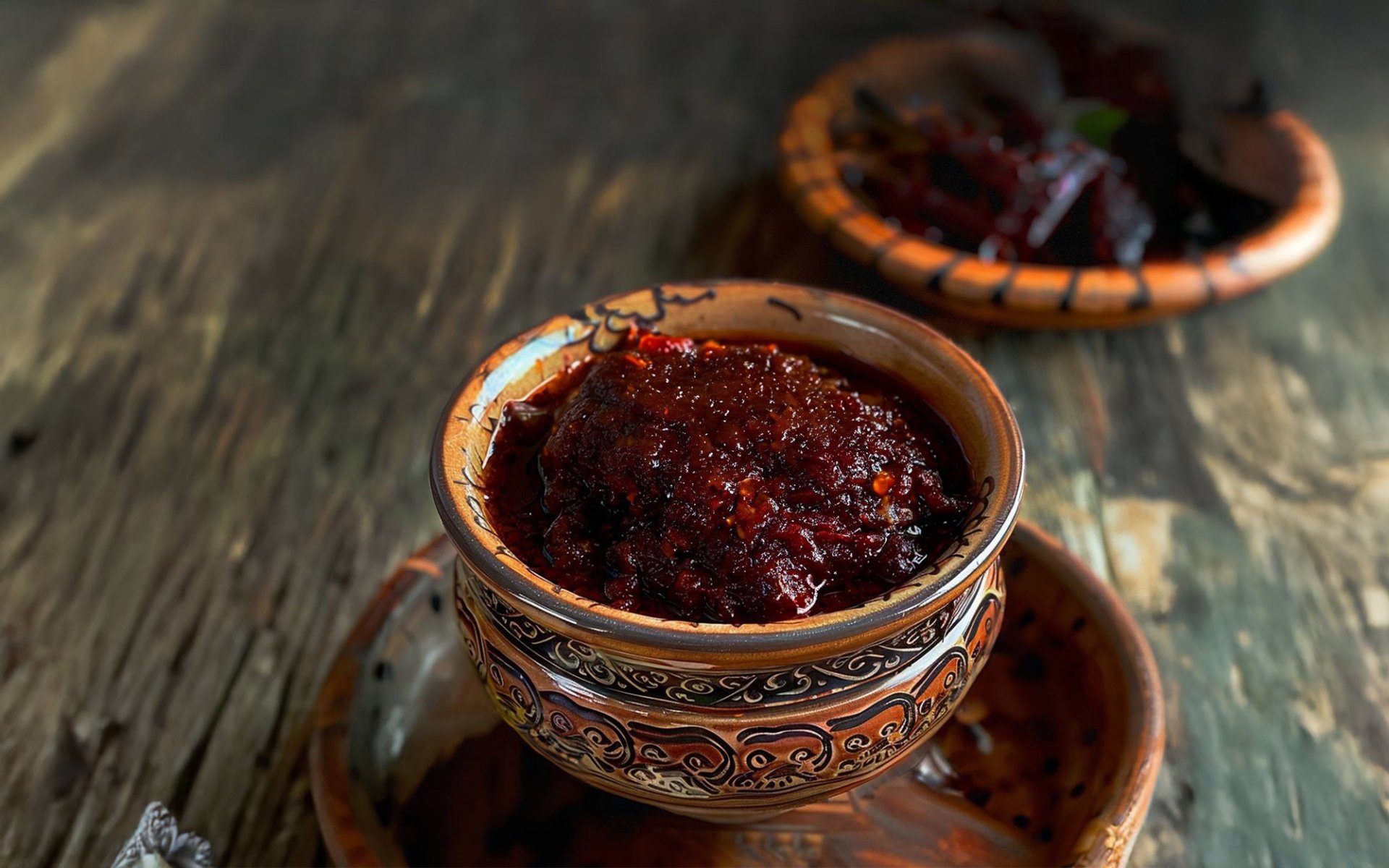Nam Prik Pao

Nam Prik Pao (Thai Chili Paste) is a staple in Thai kitchens with a long history, made from a blend of diverse ingredients and spices, offering a hot, sweet, rich flavor with a distinctive aroma. Today, Rimping Supermarket invites you to delve into the story of this chili paste that has long been a part of Thai cuisine.
Origins and Evolution: From Stir-fried Chili Paste to Nam Prik Pao
The origin of Nam Prik Pao is somewhat obscure, but it's believed to have evolved from Nam Prik Pad (Stir-fried Chili Paste), a popular chili paste in Central Thailand. It was made from dried chilies, garlic, shallots, dried shrimp, salt, and oil, pounded and then stir-fried together. It was commonly eaten with fresh or boiled vegetables, or used as a seasoning in soups, spicy salads (yum), and curries.
Later, Nam Prik Pad was further developed by adding tamarind paste and palm sugar. These ingredients gave the chili paste a thicker, more viscous texture and a balanced sweet and rich flavor, transforming it into the "Nam Prik Pao" we know today. However, Nam Prik Pao has numerous variations, with each household adjusting the recipe to their liking by adding or subtracting certain ingredients, while retaining the core components.
Over the centuries, Nam Prik Pao became an integral part of Thai culinary culture. It is used as an ingredient in various dishes such as Pad Nam Prik Pao (stir-fried with chili paste), Moo Tod Nam Prik Pao (fried pork with chili paste), Tom Yum Nam Prik Pao (spicy soup with chili paste), Tom Yum noodles, or as a dipping sauce for fresh vegetables, boiled vegetables, seafood, spread on bread, and with fried foods like rice crackers or potato chips.
The Turning Point: The Birth of Mae Pranom Chili Paste (1959 AD)
However, a significant turning point for Thai Nam Prik Pao occurred in 1959, when Mr. Sirichai and Mrs. Pranom Daengsupha (Mae Pranom), a married couple from Samut Prakan province, developed a new recipe for chili paste and bottled it for sale under the name Nam Prik Pao Mae Pranom. This marked the first ready-to-eat bottled chili paste brand in Thailand.
Mr. Sirichai stated that Nam Prik Pao Mae Pranom was born from the idea that the Thai way of life was changing, with busier lifestyles and more modern women working outside the home. Consequently, making homemade chili paste became less popular, leading to a reliance on ready-made options.
At that time, the market only offered chili paste sold from large basins by scoop. Mr. Sirichai and Mrs. Pranom conceived the idea of bottling chili paste for sale, ensuring cleanliness, convenience, and longer shelf life.
Nam Prik Pao Mae Pranom achieved great success due to its delicious and unique flavor, along with its distinct selling point: chili paste packaged in glass bottles. This became a model for other manufacturers, leading to the wide variety of bottled chili pastes available in markets and supermarkets today.
The Diversity of Nam Prik Pao: Chua Ha Seng and Unique Formulas
In addition to Mae Pranom chili paste, many other Nam Prik Pao brands are popular today. For example, Chua Ha Seng Nam Prik Pao is an old brand that has been a staple in Thai kitchens for decades. Initially, this brand was not sold in glass bottles but scooped into small containers or purchased by customers bringing their own pots or buying it by the kilogram in bags. Its production originated in Yaowarat (Bangkok's Chinatown).
The distinction of Chua Ha Seng Nam Prik Pao comes from its adapted recipe, which blends Chinese methods with Thai chili paste. This particular chili paste has a rich, oily texture, unlike traditional Thai recipes which tend to be drier. It was specifically developed as a cooking ingredient. Currently, Chua Ha Seng Nam Prik Pao is sold in cans, making it one of the few brands that uses this type of packaging for chili paste.
Nam Prik Pao is a dish that wonderfully reflects Thai culinary wisdom and culture. Do you have a favorite Nam Prik Pao recipe or brand?
You can find a variety of Nam Prik Pao brands at all Rimping Supermarket branches!


